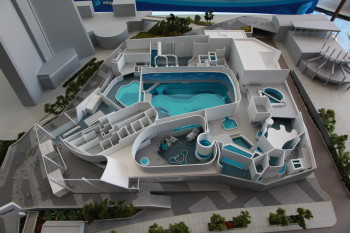As a concept, building information modeling (BIM) has several goals. Ultimately, the aim is to achieve full interoperability and collaboration for architecture, engineering and construction (AEC) teams and to make every stage of the process easier for all teams involved.
While these goals look great on paper, they take a little more work than might be expected. After all, BIM has been around since the ‘80s and is still a work in progress. Improvements such as connections made between software using APIs and more global efforts such as IFC make it easier for teams to work between different types of software. However, there are many places where these links are still missing.
What can teams do to make a BIM workflow effective for everyone, both in-house and downstream?
In many cases, including that of Canadian structural engineering firm Entuitive, the answer is still to develop a custom approach.
Small Fish in a Big Pond: Finding the Need for a Custom Workflow

A scale model of Ripley’s Aquarium of Canada in Toronto illustrates the complexity of the facility’s design. (Image courtesy of Ripley Entertainment Inc.)
Entuitive, which was founded in 2011, is a very young engineering firm. However, that didn’t stop the small fish from jumping right into the big pond. One of the company’s first projects as a structural engineering consultant was Ripley’s Aquarium of Canada in Toronto—which, if you’ve ever been, is just about as crazy as everything else…


Leave a Comment
You must be logged in to post a comment.